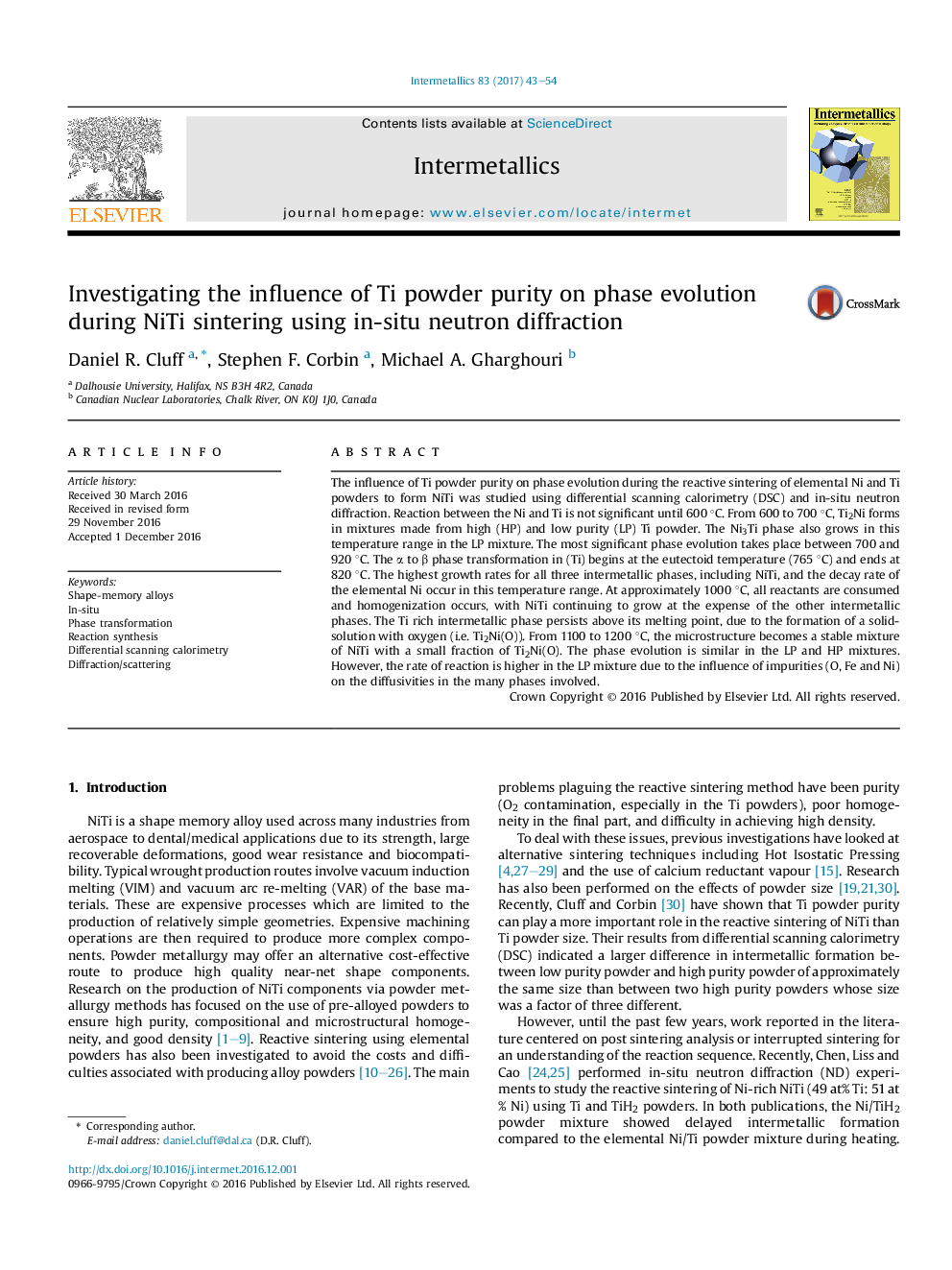| کد مقاله | کد نشریه | سال انتشار | مقاله انگلیسی | نسخه تمام متن |
|---|---|---|---|---|
| 5457521 | 1515828 | 2017 | 12 صفحه PDF | دانلود رایگان |
عنوان انگلیسی مقاله ISI
Investigating the influence of Ti powder purity on phase evolution during NiTi sintering using in-situ neutron diffraction
دانلود مقاله + سفارش ترجمه
دانلود مقاله ISI انگلیسی
رایگان برای ایرانیان
کلمات کلیدی
موضوعات مرتبط
مهندسی و علوم پایه
مهندسی مواد
فلزات و آلیاژها
پیش نمایش صفحه اول مقاله

چکیده انگلیسی
The influence of Ti powder purity on phase evolution during the reactive sintering of elemental Ni and Ti powders to form NiTi was studied using differential scanning calorimetry (DSC) and in-situ neutron diffraction. Reaction between the Ni and Ti is not significant until 600 °C. From 600 to 700 °C, Ti2Ni forms in mixtures made from high (HP) and low purity (LP) Ti powder. The Ni3Ti phase also grows in this temperature range in the LP mixture. The most significant phase evolution takes place between 700 and 920 °C. The α to β phase transformation in (Ti) begins at the eutectoid temperature (765 °C) and ends at 820 °C. The highest growth rates for all three intermetallic phases, including NiTi, and the decay rate of the elemental Ni occur in this temperature range. At approximately 1000 °C, all reactants are consumed and homogenization occurs, with NiTi continuing to grow at the expense of the other intermetallic phases. The Ti rich intermetallic phase persists above its melting point, due to the formation of a solid-solution with oxygen (i.e. Ti2Ni(O)). From 1100 to 1200 °C, the microstructure becomes a stable mixture of NiTi with a small fraction of Ti2Ni(O). The phase evolution is similar in the LP and HP mixtures. However, the rate of reaction is higher in the LP mixture due to the influence of impurities (O, Fe and Ni) on the diffusivities in the many phases involved.
ناشر
Database: Elsevier - ScienceDirect (ساینس دایرکت)
Journal: Intermetallics - Volume 83, April 2017, Pages 43-54
Journal: Intermetallics - Volume 83, April 2017, Pages 43-54
نویسندگان
Daniel R. Cluff, Stephen F. Corbin, Michael A. Gharghouri,